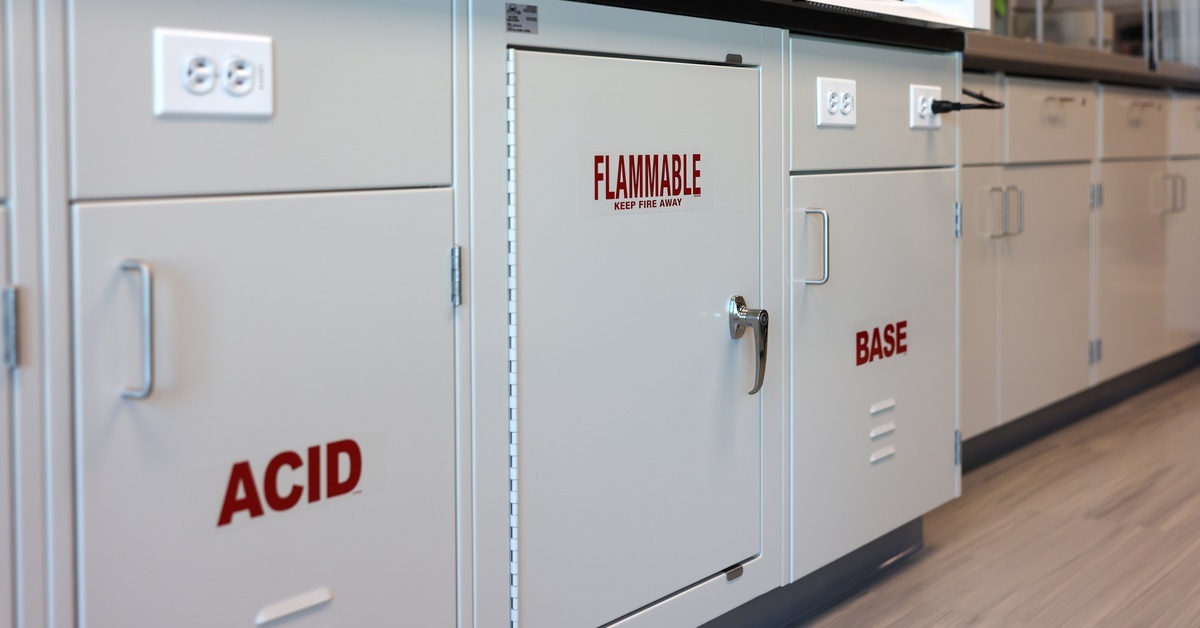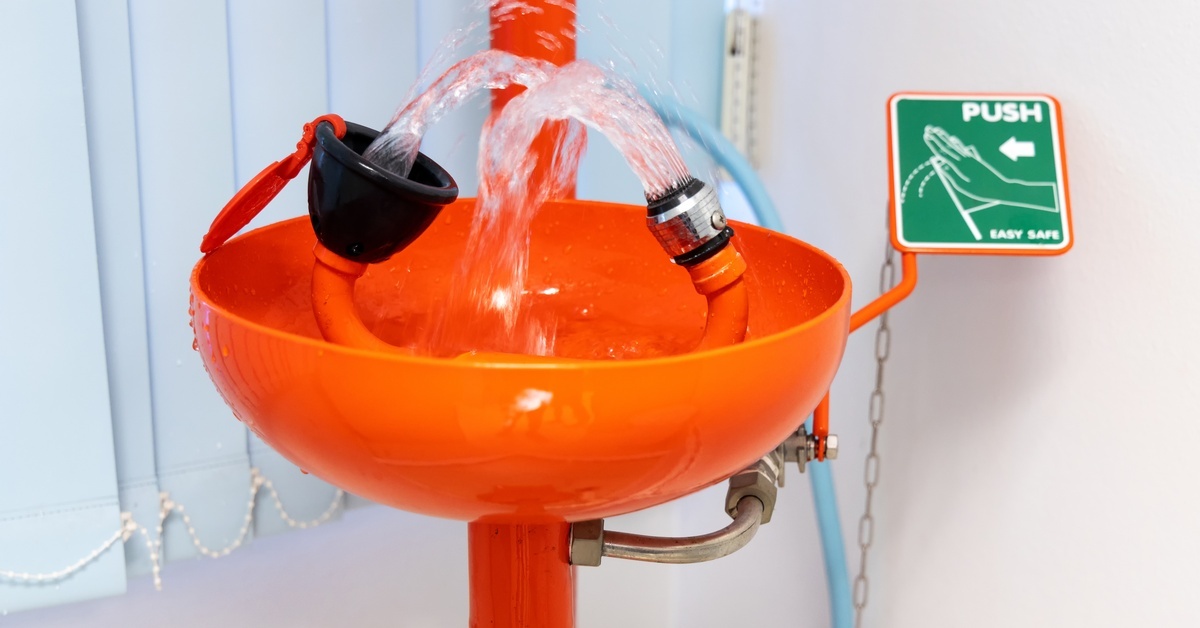Guide to Promoting Lab Safety When Working With Chemicals
For anyone working in a lab setting, it takes more than following rules to maintain personal well-being and the integrity of your work. Handling chemicals, whether during routine experiments or complex analyses, is inherently risky.
Mishandling or neglecting safety protocols can lead to incidents ranging from minor injuries to catastrophic accidents. Use this guide to promote lab safety when working with chemicals to create a detailed framework for fostering a safety culture among lab technicians.
Understanding Workplace Chemical Hazards
The first step in lab safety is understanding the hazards of the chemicals you handle. Chemicals have classifications in certain hazard categories, such as toxic, flammable, corrosive, and reactive substances. Toxic chemicals harm when they’re inhaled, ingested, or in contact with the skin. Flammable substances pose ignition risks, while corrosive materials damage living tissue or equipment. Knowing these classifications is vital to prevent accidents.
Safety data sheets (SDS) play a crucial role in this process. SDS documents provide essential information about a chemical’s properties, hazards, handling, and first aid measures. Reviewing the SDS is a nonnegotiable part of your workflow to keep your team aware of potential risks.
Developing a Comprehensive Lab Safety Policy
A written lab safety policy is the foundation for safe chemical handling. This document should outline protocols, permissible chemical usage, and emergency procedures for your workplace. Key components of your policy should include proper storage and handling techniques of laboratory supplies such as test tubes and syringes.
When enforced consistently, a lab usage policy fosters a safety culture in your lab, providing employees with clear expectations and procedures. Review your safety policy annually, considering updates that improve lab procedures and changes made to the facility over the past year.
Using Personal Protective Equipment (PPE)
In any lab setting where chemicals are a concern, appropriate PPE is required. Essential PPE includes lab coats, safety goggles, gloves, face shields, and respiratory protection equipment. Selecting PPE requires understanding the type of chemical hazards workers face. For instance, gloves made of nitrile may be suitable for handling solvents but ineffective against strong acids. Equally important is the proper fit and routine maintenance of PPE. Train personnel to inspect and replace their equipment when wear and tear occur.

Following Proper Chemical Storage Procedures
Correctly storing chemicals prevents contamination and accidents. Group chemicals by compatibility, separating acids, bases, flammables, and oxidizers to mitigate the risk of dangerous reactions. Use storage solutions like flammable cabinets, acid storage lockers, or chemical refrigerators where necessary.
Store chemicals in properly labeled, sealed containers, keeping them away from direct sunlight, heat sources, or areas exposed to moisture. Arrange storage units to make frequently used chemicals readily accessible, reducing the chance of accidental spills.
Preparing the Lab Environment
Creating a safe lab requires more than just protective gear. The lab environment requires thoughtful arrangements to minimize risks. Provide proper ventilation to prevent the accumulation of harmful fumes. Fume hoods, air purifiers, and well-placed exhaust systems are vital when working with volatile chemicals.
A well-organized workspace reduces accidents. Lab benches should be free of clutter to allow free movement, and tools need regular inspection for damage or malfunction to avoid mishaps during experiments.
Implementing Chemical Labeling and Inventory Control
Clear and standardized labeling is one of the simplest yet most critical ways to avoid chemical accidents. Labels should include essential information such as the chemical name, concentration, hazard symbols, and expiration date. Always follow guidelines from organizations like the Occupational Safety and Health Administration (OSHA) or the Globally Harmonized System (GHS) for chemical labeling.
Inventory control is equally important. Keeping an up-to-date log of chemicals ensures you promptly address expired or potentially hazardous materials. Develop a digital inventory system to accurately track quantities, locations, and restocking schedules.
Ensuring Safe Handling and Transportation of Chemicals
Proper handling and transportation of chemicals reduces risk during everyday lab activities. Use secondary containment, such as trays or carriers, when transporting chemicals, especially over long distances within the lab. Never carry multiple containers by hand, as this increases the chance of spills.
Practice safe handling techniques, such as pouring chemicals slowly to avoid splashes and holding containers by their body, not just their neck. Reduce risks further by assigning specific pathways within the lab for chemical transport.
Developing Employee Training and Competency
Regular training sessions are critical for building a safety-conscious workforce. Training, from new hire onboarding to ongoing refresher courses, should cover key topics like hazard identification, SDS usage, and emergency response protocols. Consider organizing role-specific training tailored to individual responsibilities.
Certify employees’ competency by evaluating their understanding of safety practices through quizzes or hands-on demonstrations. A competency-based approach ensures employees know safety procedures and apply them effectively.
Creating Emergency Preparedness and Response Plans
No matter how effective your safety measures are, emergencies are still possible. Being prepared prevents situations from spiraling out of control so every person in the lab has a higher chance of remaining safe and handling the issue.
Develop a detailed emergency response plan that outlines evacuation procedures, chemical spill protocols, and key contact information for emergency services. Train all personnel to recognize alarms and understand what to do during specific emergencies. Conduct regular fire drills and mock spill response exercises to reinforce these procedures.

Using First Aid After Chemical Exposure
When chemical exposure occurs, knowing how to respond immediately prevents serious harm. Include emergency shower and eyewash stations in your lab’s design for rapid decontamination. Provide first aid kits stocked with saline solution, burn ointments, and PPE for those administering aid. Ensure your team knows how to render basic first aid and when to escalate the situation to medical professionals. Train everyone on the location of SDS documents to find critical first-aid instructions for each chemical.
Implementing Waste Disposal for Environmental Protection
Improper chemical waste disposal poses risks to people and the environment. Comply with local and federal regulations when disposing of hazardous waste. Designate containers for each type of waste and label them clearly to avoid mishandling. Consider adopting sustainable lab practices, such as recycling solvents and responsibly recycling consumables like gloves. Environmental protection should be a priority, aligning your lab’s methods with broader sustainability and safety goals.
Conducting Routine Safety Audits and Inspections
Safety audits are vital for maintaining a hazard-free work environment. Schedule routine inspections to assess compliance with safety protocols, identify risks, and rectify gaps in safety measures. Audits should evaluate everything from PPE availability to compliance with labeling standards. Keep thorough records of audits and corrective actions taken to build accountability and improvement over time. Consider using digital tools to track and manage audit findings efficiently.
Promoting lab safety when working with chemicals is not the job of one person; it’s a collective effort. Use these guidelines to improve protocols in the lab and create safer spaces for everyone. Remember, the ultimate goal of safety is to prevent accidents and foster a culture of respect for the lives and well-being of your colleagues.
Recent Posts
-
The Role of Desiccants in Protecting Hygroscopic Chemicals
Hygroscopic chemicals readily absorb moisture from the surrounding environment, leading to compromis …May 19th 2025 -
All About Pairing Containers With Corrosive Substances
Handling corrosive substances is critical in many industries, including manufacturing, pharmaceutica …May 12th 2025 -
Why Solvent Purity Is Crucial in the World of Chemistry
When producing accurate and reliable results in chemistry, solvent purity is non-negotiable. Many se …May 11th 2025




